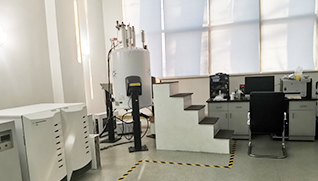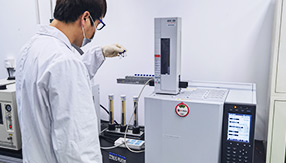注意:因业务调整,暂不接受个人委托测试望见谅。
蛋白表达检测技术及其应用
在生物医学研究与药物开发领域,蛋白表达水平的精准检测是解析细胞功能、疾病机制及药物靶点筛选的核心环节。本文将从检测样品、检测项目、检测方法及检测仪器四个方面,系统介绍蛋白表达检测的关键技术及其应用价值。
一、检测样品
蛋白表达检测的样品类型多样,主要包括:
- 细胞裂解液:来源于培养的哺乳动物细胞、细菌或酵母,用于分析特定蛋白在细胞内的表达水平。
- 组织提取物:从动物或人体组织中分离的蛋白样本,常用于疾病标志物研究。
- 血清或体液:如血液、脑脊液等,适用于临床诊断中的蛋白标志物检测。
- 重组蛋白:通过基因工程技术表达的纯化蛋白,用于抗体验证或功能研究。
二、检测项目
蛋白表达检测的核心目标是定量或定性分析目标蛋白的存在及丰度,常见检测项目包括:
- 总蛋白定量:通过BCA法或Bradford法测定样品中总蛋白浓度。
- 目标蛋白特异性检测:利用抗体识别特定蛋白(如Western Blot、ELISA)。
- 翻译后修饰分析:检测磷酸化、糖基化等修饰状态。
- 蛋白相互作用:通过免疫共沉淀(Co-IP)或Pull-down技术研究蛋白复合体。
三、检测方法
-
Western Blot(WB) 基于抗原-抗体特异性结合的原理,通过电泳分离蛋白,转膜后使用一抗和二抗标记目标蛋白,结合化学发光或荧光信号进行检测。该方法灵敏度高,适用于低丰度蛋白分析。
-
酶联免疫吸附试验(ELISA) 采用固相包被抗体捕获目标蛋白,通过酶标二抗催化底物显色,实现定量检测。适用于大批量样本的高通量筛查。
-
质谱分析 基于蛋白肽段的质荷比进行鉴定,可同时分析数千种蛋白,广泛应用于蛋白质组学研究。
-
免疫组化(IHC) 在组织切片中定位目标蛋白的表达位置,结合显微镜成像进行半定量分析。
四、检测仪器
蛋白表达检测依赖高精度仪器完成关键步骤:
- 离心机:用于样品制备中的细胞或组织破碎。
- 电泳系统:如Bio-Rad的垂直电泳槽,用于SDS-PAGE分离蛋白。
- 转印仪:将凝胶中的蛋白转移至PVDF或NC膜。
- 化学发光成像系统:如Tanon系列,用于捕获Western Blot信号。
- 酶标仪:Synergy HTX等多功能型号,用于ELISA吸光度读数。
- 质谱仪:如Thermo Fisher的Orbitrap系列,实现高分辨率蛋白鉴定。
五、应用与展望
蛋白表达检测技术已广泛应用于癌症标志物筛查、疫苗研发、抗体药物质量控制等领域。随着单细胞蛋白组学、微流控芯片等技术的发展,检测通量和灵敏度将进一步提升,为精准医学和基础研究提供更强大的工具支持。
通过标准化操作流程与先进仪器的结合,蛋白表达检测将继续推动生命科学领域的突破性进展。
实验仪器




测试流程

注意事项
1.具体的试验周期以工程师告知的为准。
2.文章中的图片或者标准以及具体的试验方案仅供参考,因为每个样品和项目都有所不同,所以最终以工程师告知的为准。
3.关于(样品量)的需求,最好是先咨询我们的工程师确定,避免不必要的样品损失。
4.加急试验周期一般是五个工作日左右,部分样品有所差异
5.如果对于(蛋白表达检测)还有什么疑问,可以咨询我们的工程师为您一一解答。
- 超临界状态耐压测试阅读:1
- 蒸压加气混凝土砌块检测阅读:112
- 电自动控制器检测阅读:44
- 滴点锥入度检测阅读:62
- 产品温度检测阅读:49
- 密封水嘴测试阅读:43
- 羧酸酯酶酶活检测阅读:65
- 粮食、油料检测阅读:55
- 导引器械测试阅读:55
- 聚合物基冠桥材料测试阅读:37
-
服务保障 一对一品质服务
-
定制方案 提供非标定制试验方案
-
保密协议 签订保密协议,严格保护客户隐私
-
全国取样/寄样 全国上门取样/寄样/现场试验





